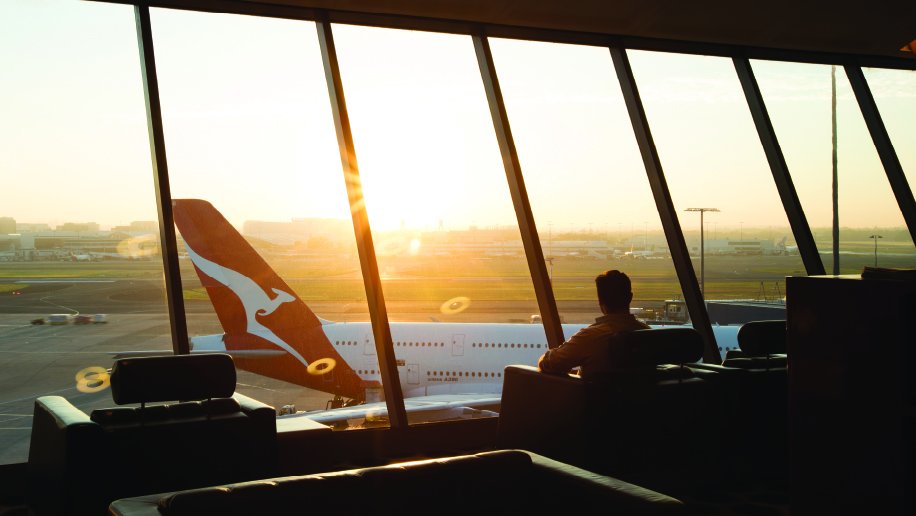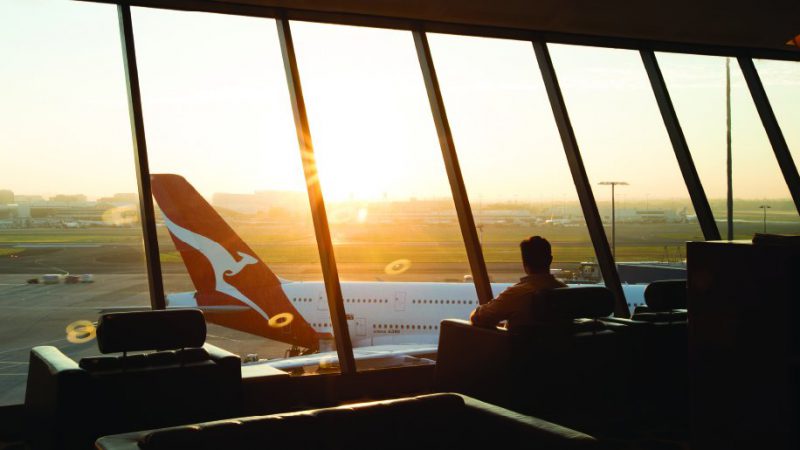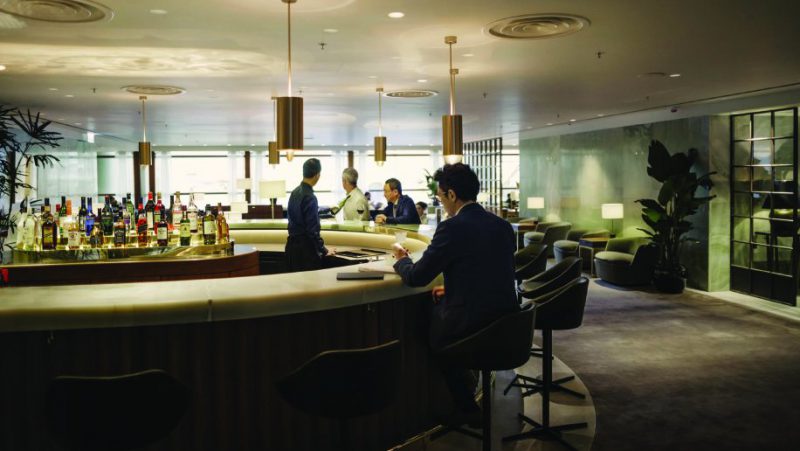A Question of Loyalty
Should airline lounges be a reward for revenue or for loyalty?
February 28, 2019

Airlines used to mainly be in the business of getting passengers from A to B. And, of course, they still are. However, as part of running profitable and sustainable businesses in a highly competitive global market, the airlines have also become focused on something else: passenger loyalty, embodied in things such as frequent flier programs.
Many of us who travel frequently will agree that a key part of managing customers’ loyalty is managing their expectations. Without a doubt, we customers are a demanding lot, particularly those of us who travel frequently as part of our work. No longer content with merely getting to our destination something close to on time, we now expect the travel process to be seamless, well supported, comfortable and perhaps even a little bit special. We also expect to be recognized and rewarded, not just in the sky but on the ground as well.
Getting customer loyalty right is important for any airline that wants to attract and maintain those lucrative corporate and premium customers. In fact, most full service airlines rely on this higher yielding business to counter the poorer returns back in economy. Lounges are a crucial part of maintaining loyalty, both in terms of reward and recognition.
The lounge revolution started with the rise of the major airline alliances back in the 1990s. For most business travelers, a key benefit of holding a higher tier membership of Oneworld, Star Alliance and/or Skyteam is cross-airline lounge access, especially when traveling in economy where lounge access isn’t included in the fare.
To cope with constantly growing passenger volumes, fierce competition and customer expectation, airline lounges have slowly evolved from cozy spaces with armchairs, magazines and a coffee machine into vast spaces that rival good hotels, restaurants, bars or clubs in terms of their food, drink and service.
Lounges have become major projects in their own right, taking up a growing chunk of many full service airlines’ capital and operational expenditure. Airlines are continuing to invest hundreds of millions of dollars for the benefit of their most high-spending customers. New York JFK, Los Angeles, Doha, Dubai, Hong Kong, Singapore, Istanbul and London Heathrow contain many lounges, which cover significant amounts of the available floor space.
Is this spending justified? It seems one of the most talked about aspects of business and premium travel is what the airlines are doing (or in some cases not doing) with their lounges. The pre-flight experience has become a key part of the business traveler’s journey. A change in the brand of champagne or snacks provided can lead to protests.
But for business travelers, basics such as fast and reliable access to WiFi and power outlets can make or break our productivity in the pre-flight hours. Get that wrong and the airlines risk frustrating their most loyal customers before they even get on the plane.
And then there’s the age-old question of comfort. With lounges now being heavily marketed as a key part of the travel experience, most eligible customers arrive looking forward to the lounge like a desert wanderer reaching a lush oasis. We’ve paid a lot for that business or first class ticket and circled the planet multiple times to reach super elite frequent flier status. So, we expect to be recognized and rewarded. We want spa treatments, premium food and drinks, and high-quality facilities and services akin to those in a four- or five-star hotel.
This sort of pre- and post-flight pampering doesn’t come cheap for the airlines, especially when access is granted even to those in economy through their frequent flier status. With some lounge visitors consuming more in value than they generate in profit, this begs the question: Should lounges be a reward for revenue or loyalty?
Revenue Versus Loyalty
I recently flew from Sydney to London on Qatar Airways in economy class. But as I’m a loyal Oneworld Emerald frequent flyer (i.e., the top tier), before the first flight to Doha, I was able to spend two hours at the Qantas first class lounge at Sydney International airport. This is because I was able to gain access to any Oneworld member’s first class lounge before departure, an Emerald privilege.
I arrived early, and so after a three-course gourmet lunch in the restaurant, several glasses of champagne, a complimentary 15-minute massage followed by a shower and then more champagne, it felt like I’d consumed a quarter of AU$1,500 economy ticket’s value in pure lounge extravagance.
Next stop was Doha before the four-hour transit to London. I’d been looking forward to enjoying Qatar Airways’ flagship lounge at their hub in Doha, so I was surprised to be politely told that I wasn’t eligible for entry. The Al Safwa lounge, described as “an oasis of luxury” complete with flowing waterfalls, a fine dining restaurant and spa, is available only to Qatar Airways customers holding a first class ticket.
I was directed to the smaller but completely acceptable Qatar Airways first class lounge (there were no waterfalls) or invited to pay an additional 450 Qatari Riyals (about $150) for access to the much larger Al Mourjan lounge where Qatar Airways sends its business class passengers free of charge.
What happened? In Sydney, I flew economy and Qatar Airways had invited me to the flagship Qantas first class lounge. But in Doha, despite being Oneworld Emerald, I was denied access to Qatar’s own flagship lounge. All in accordance with the terms and conditions on the Oneworld and Qatar Airways websites.
Not All Lounges Are the Same
Qatar Airways is one of a growing list of premium airlines, including Singapore Airlines, Lufthansa and British Airways, which are distinguishing between revenue and loyalty when allocating lounge access, particularly at their busy hub lounges.
For example, even where a passenger holds a top-tier Star Alliance gold card, if they have an economy or premium economy ticket, they’re not eligible to enter the Silverkris and Private Room lounges at the airline’s Changi hub. Instead they’re invited to the Krisflyer Gold lounge, which doesn’t provide showers or even dedicated toilets.
Similarly, at London Heathrow T5, top-tier Oneworld Emerald cardholders don’t get access to the Concorde Room, which is for those holding first class tickets. In Frankfurt, Lufthansa’s first class terminal is limited to customers travelling in first class or HON Circle members. Top-tier Star Gold cardholders don’t get access.
What this shows is that many airlines are now moving towards a model where, despite your frequent-flyer status, perks such as premium lounge access are based on the price you paid for your ticket, rather than your overall loyalty to the airline or alliance.
This arguably makes some sense. It corrects the injustice of a top-tier frequent-flyer status passenger who has paid $2,000 for an economy ticket getting a significantly better pre-flight experience in the first class lounge than the $8,000 business class ticket holder without frequent flyer status who can only use in the less glamorous business class lounge down the hallway.
In the United States, however, there’s an opposite trend. When traveling domestically using the three legacy US carriers – Delta, United or American Airlines – in most cases (excluding certain transcontinental flights), top-spending first and business class ticket holders don’t get any lounge access included in the fare. Only those with eligible tier frequent flyer status can enter the lounge before the flight. Here, loyalty truly trumps revenue.
The Future of Lounges
Qatar Airways recently announced they won’t be providing complimentary lounge access to certain points-upgraded business and first class customers, at the same time offering a “pay-as-you-go” option for those passengers without free access. Other full-service airlines such as Air France and Emirates are already offering a similar plan.
While ruffling the feathers of some frequent flyers, this new pay-per-visit strategy addresses the enormous cost of providing complimentary lounges and provides all customers the opportunity to have a luxurious pre-flight experience. However top-tier frequent fliers may feel neglected, or that their loyalty seems to have been downgraded or ignored.
Will the changes alter purchasing behavior? Perhaps. What is certain, however, is the growing importance of lounges to airlines and airports. The growth of Priority Pass and similar products show that lounge access – however it’s obtained – is likely to remain a key part of many passengers’ pre-flight experience.





